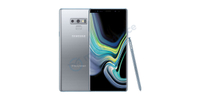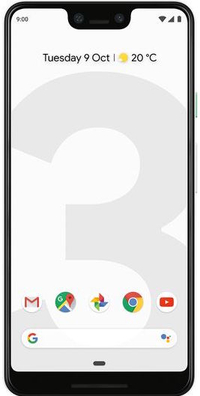Galaxy Note 9 vs. Pixel 3 XL: Which Big-Screen Phone Wins?
Samsung’s Galaxy Note phones have long ruled the world of big-screen phones. But can the new Pixel 3 XL knock the Note 9 off its throne?
Samsung was one of the first phone makers to embrace big screens, making display real estate a focal point in its Galaxy Note lineup. It's a move that smartphone shoppers have also embraced, and one that competitors have tried to ape with phablets of their own.

Google is the latest to come at the king, with its 6.3-inch Pixel 3 XL. That's the biggest display ever featured on one of Google's phones, and the company had to make some design changes from previous Pixels to fit in all that screen space. But is it enough to knock the Galaxy Note 9 off its perch? Let's see how these two massive smartphones measure up.
Note 9 vs. Pixel 3 XL Specs
| Phone | Note 9 | Pixel 3 XL |
| Starting Price | $999 | $899 |
| Screen (Resolution) | 6.4-inch Super AMOLED (2960 x 1440) | 6.3-inch OLED (2960 x 1440) |
| CPU | Snapdragon 845 | Snapdragon 845 |
| RAM | 6GB, 8GB | 4GB |
| Storage | 128GB, 512GB | 64GB, 128GB |
| MicroSD | Yes | No |
| Rear Camera | Dual 12-MP (f/1.5-f/2.4) | 12.2-MP (f/1.8) |
| Front Camera | 8-MP (f/1.7) | 2 8-MP (wide: f/2.2; telephoto: f/1.8) |
| Battery Size | 4,000 mAh | 3,430 mAh |
| Battery Life (Hrs:Mins) | 11:26 | 9:30 |
| Water Resistance | IP68 | IP6X |
| Size | 6 x 3 x 0.34 inches | 6.2 x 3 x 0.3 inches |
| Weight | 7.1 ounces | 6.5 ounces |
| Colors | Lavender Purple, Ocean Blue, Midnight Black, Cloud Silver | Clearly White, Just Black, Not Pink |
Design
Both phones opt for expansive, full-screen views that offer displays with an 18.5:9 aspect ratio. They just take different routes to getting there.
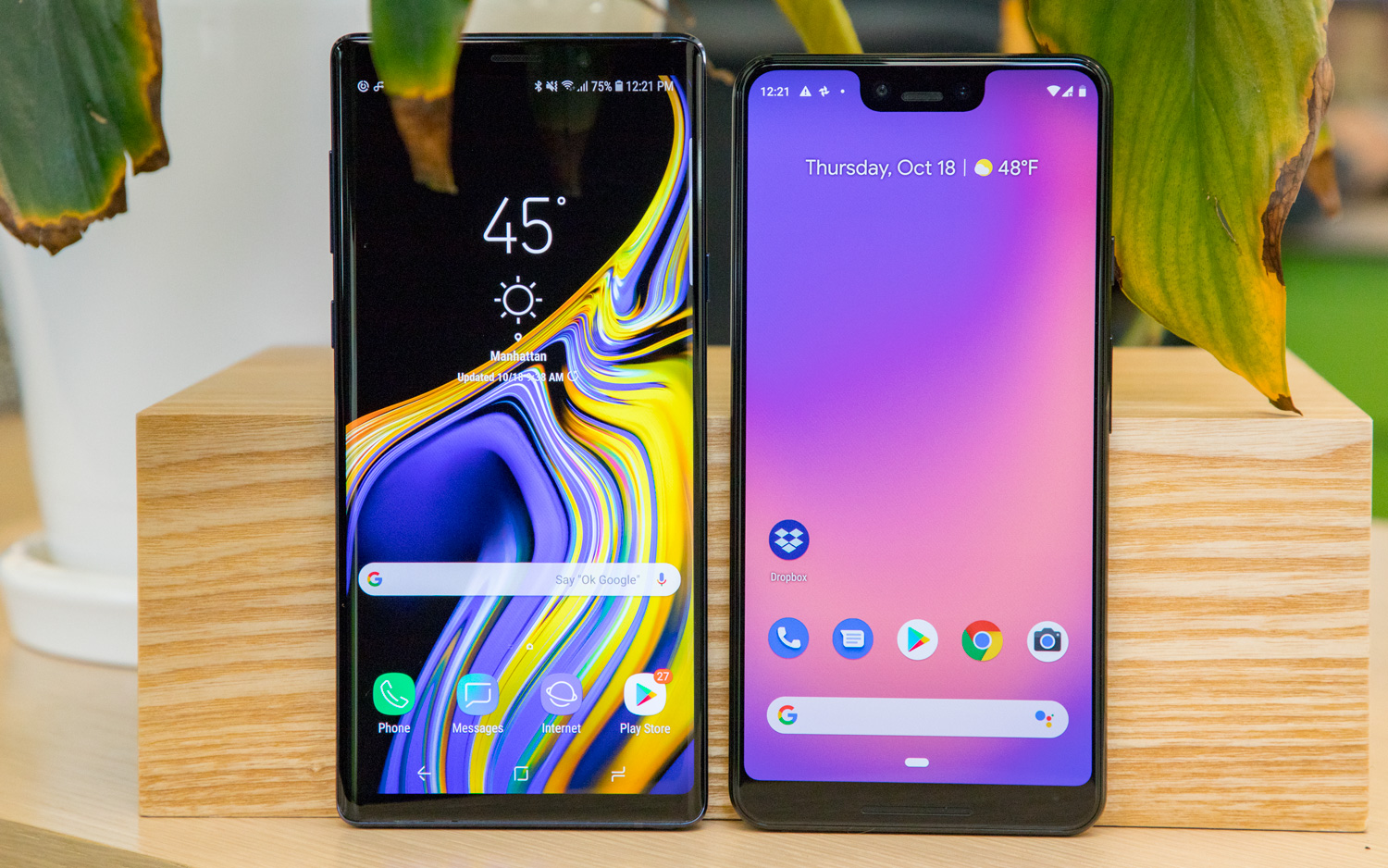
In the Note 9's case, it retains the Infinity Display that Samsung introduced with the Note 8. The curved 6.4-inch screen goes from edge to edge with minimal bezels at the top and bottom. The Pixel 3 XL uses a notch to fit in more screen space on its 6.3-inch display, and it's a fairly chunky notch as well. There's also a bit more bezel on Pixel's chin than what you get with the Note 9.
Even so, the 6.2 x 3 x 0.3-inch Pixel 3 XL is not as tall as the 6.3 x 3 x 0.34-inch Note 9, and it weighs less, too (6.5 ounces versus 7.1 ounces on the Note 9).
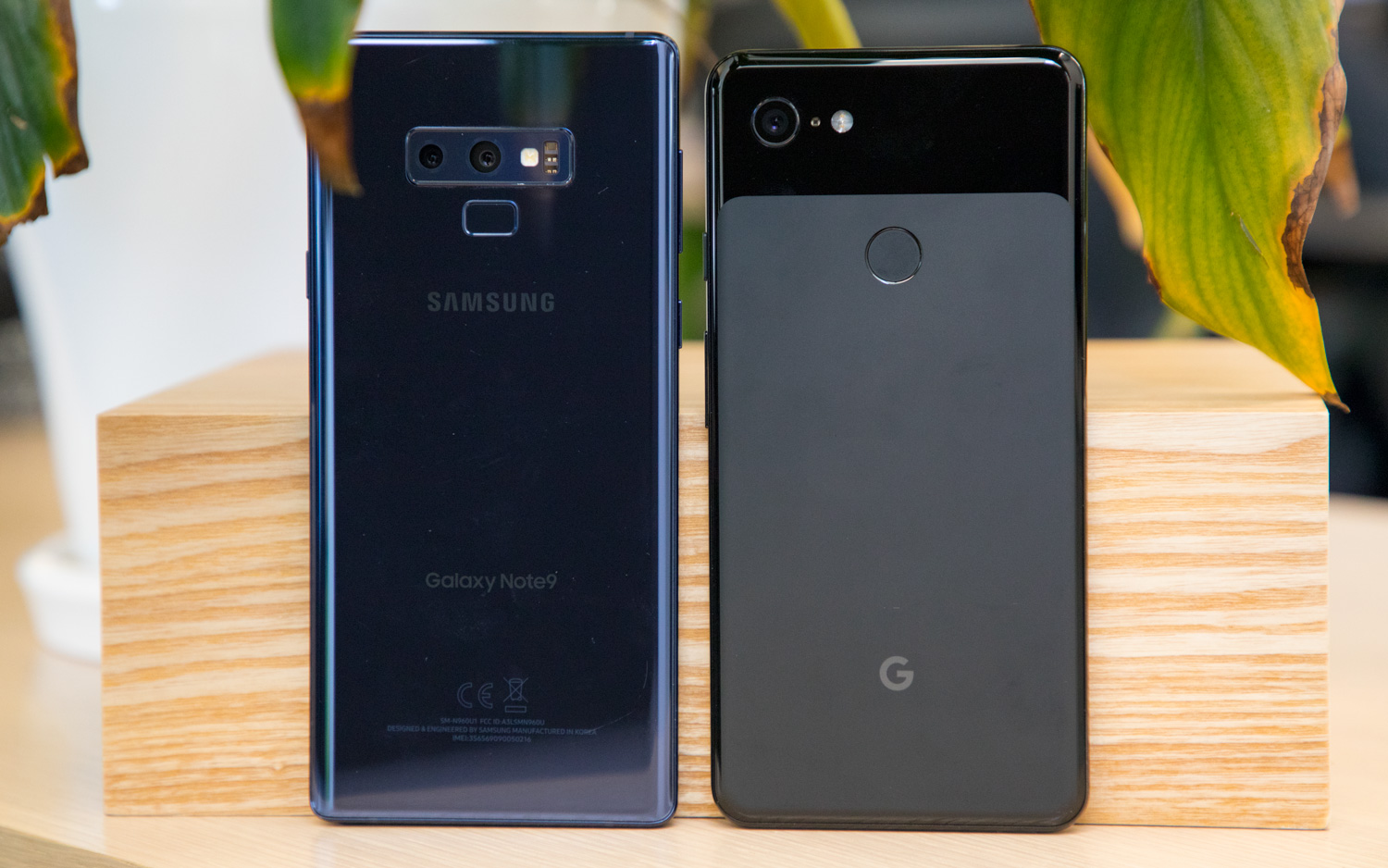
The Note 9 is basically unchanged from the Note 8, with the exception of its fingerprint sensor, which moves to a more accessible location on the back of the phone. Meanwhile, Google has made a big change to the Pixel 3 XL's design so that it could add wireless charging. The Pixel 3 XL has a glass back, but Google still managed to give it a matte finish to retain the Pixel's distinctive two-tone look. We like how that design feat not only makes the Pixel 3 XL easier to grip, but also how it resists fingerprints, too.
MORE: Pixel 3 XL vs. iPhone XS Max: Google's Big Phone Could Win
Neither phone is really known for its bold use of color, though Samsung has shaken things up a little bit with the Note 9. That phone debuted in Lavender Purple and Ocean Blue and it's since added Midnight Black and Cloud Silver options. The Pixel 3 XL features the same-old black and white options, while adding a new shade that it's dubbed Not Pink. (Spoiler alert: it's pink enough.)
Winner: Note 9
Display
On paper, the Note 9 and Pixel 3 XL have matching 2960 x 1440 resolutions on their OLED panels. In the lab, however, the Note 9's display performs a little bit. It reproduces 224 percent of the sRGB color gamut, and those vibrant colors are pretty accurate, too. We recorded a Delta-E score of 0.34 for the Note 9. (A score of 0 is ideal.) The Pixel 3 XL doesn't capture as many colors — 170.2 percent of the sRGB gamut by our testing — though its colors are about as accurate as the Note 9's based on its 0.35 Delta-E rating.
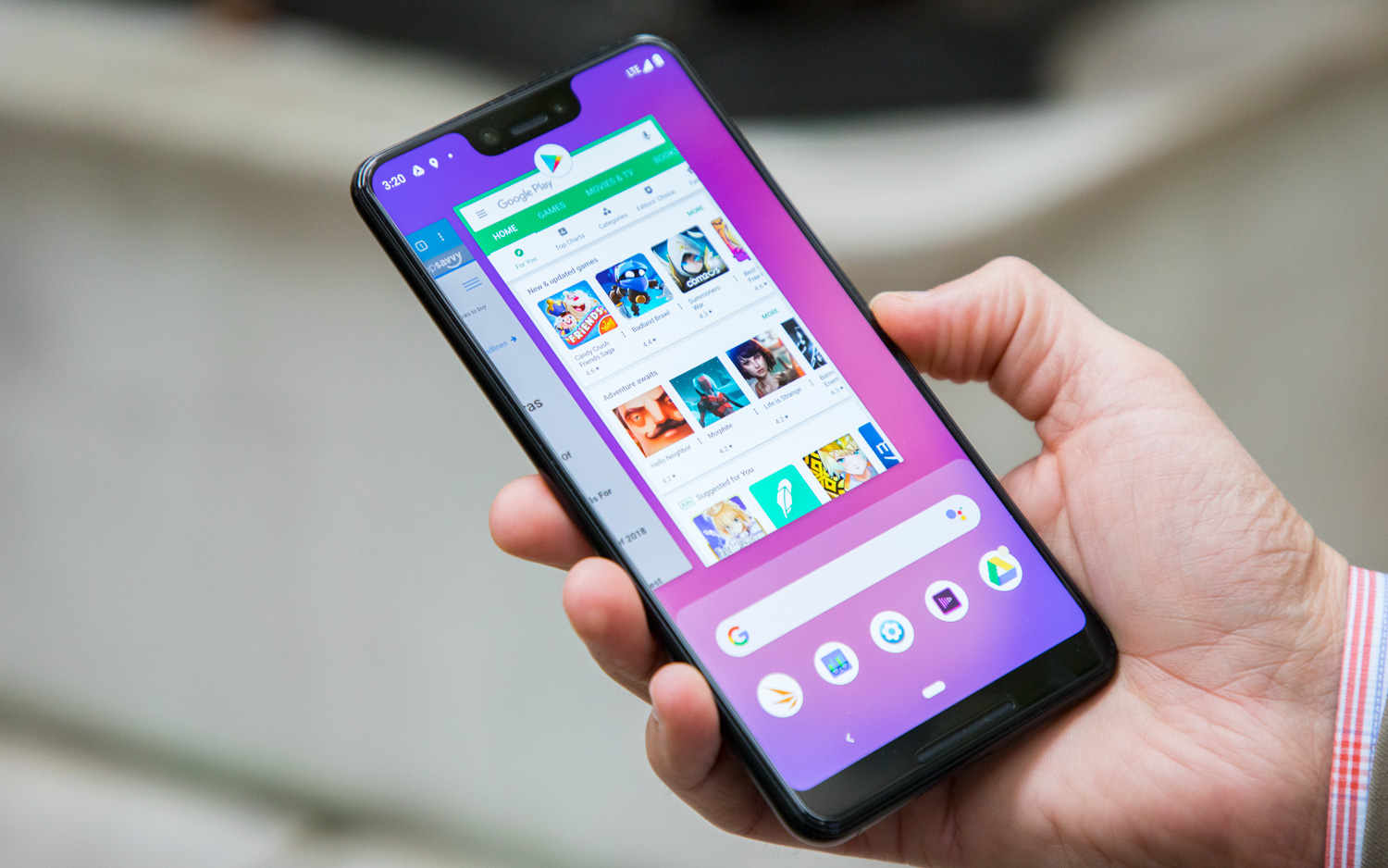
Where the phones' displays really diverge is brightness. The Note 9 maxed out at 604 nits when we measured it with a light meter. The Pixel 3 XL could only reach 362 nits. That's not just dimmer than the Note 9, it also falls short of the smartphone average.
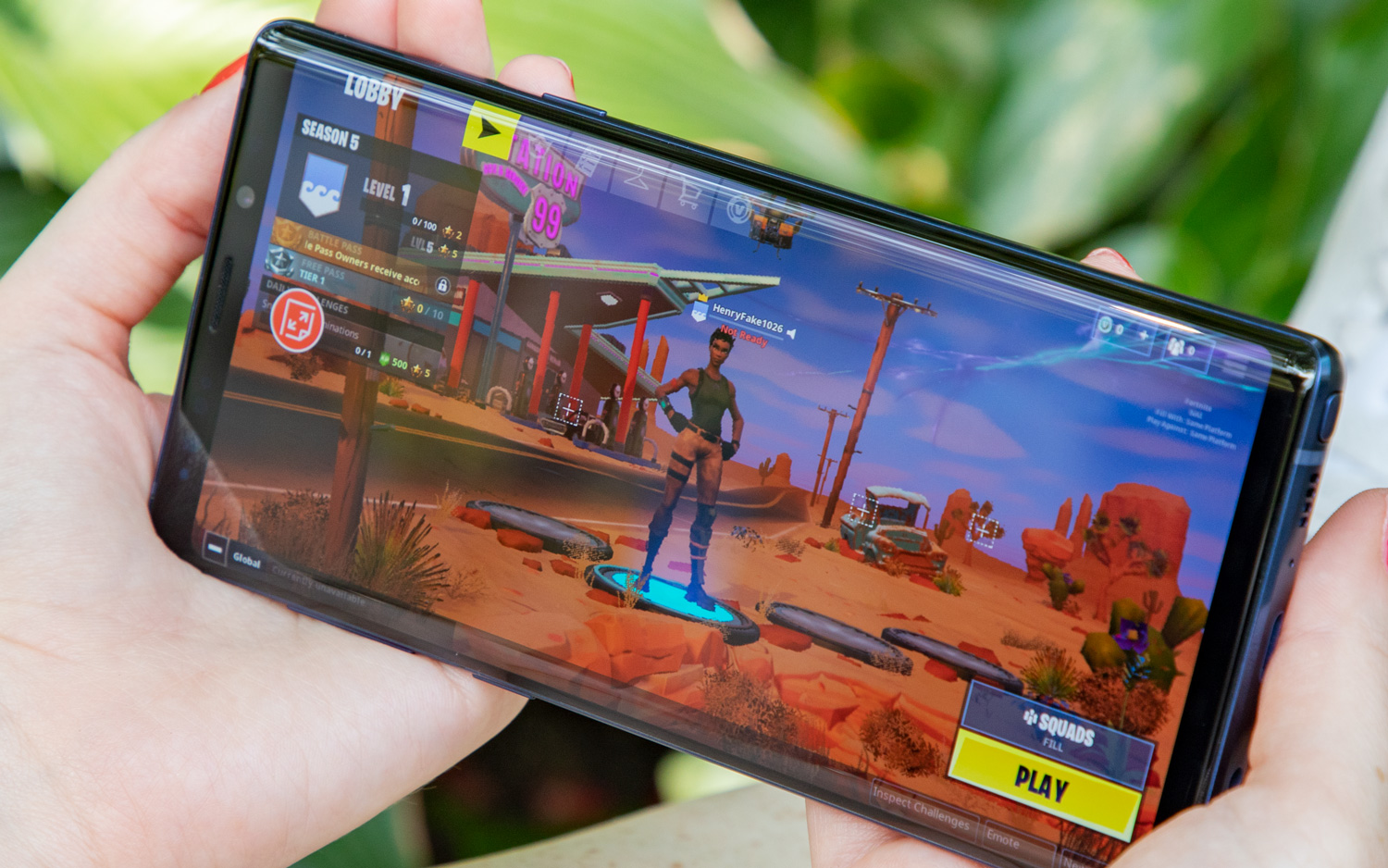
The Note 9 is noticeably brighter in day-to-day use, but the Pixel screen compares favorably in other aspects. We watched the Aquaman trailer on both phones with their adaptive display modes turned on and boosting colors. The Note 9 tends to favor saturated colors and darker overall blacks, which made some of the underwater scenes less visible than they were on the Pixel 3. Then again, the Note 9 offers a range of display profiles so you can tweak the screen to your preference. On the Pixel 3, your choice boils down to saturated colors or not.
Winner: Note 9
Cameras
Are two cameras better than one really smart one? That's what a Note 9/Pixel 3 XL camera face-off really boils down to.

On the Note 9, you'll get two 12-megapixel rear cameras, including one lens with a variable aperture that lets in more light as circumstances demand. Samsung has also leaned hard into artificial intelligence with a Scene Optimizer feature capable of recognize 20 different scenes (food, sunsets, backlit settings and more) and adjusting camera settings on the fly to produce the best shot.
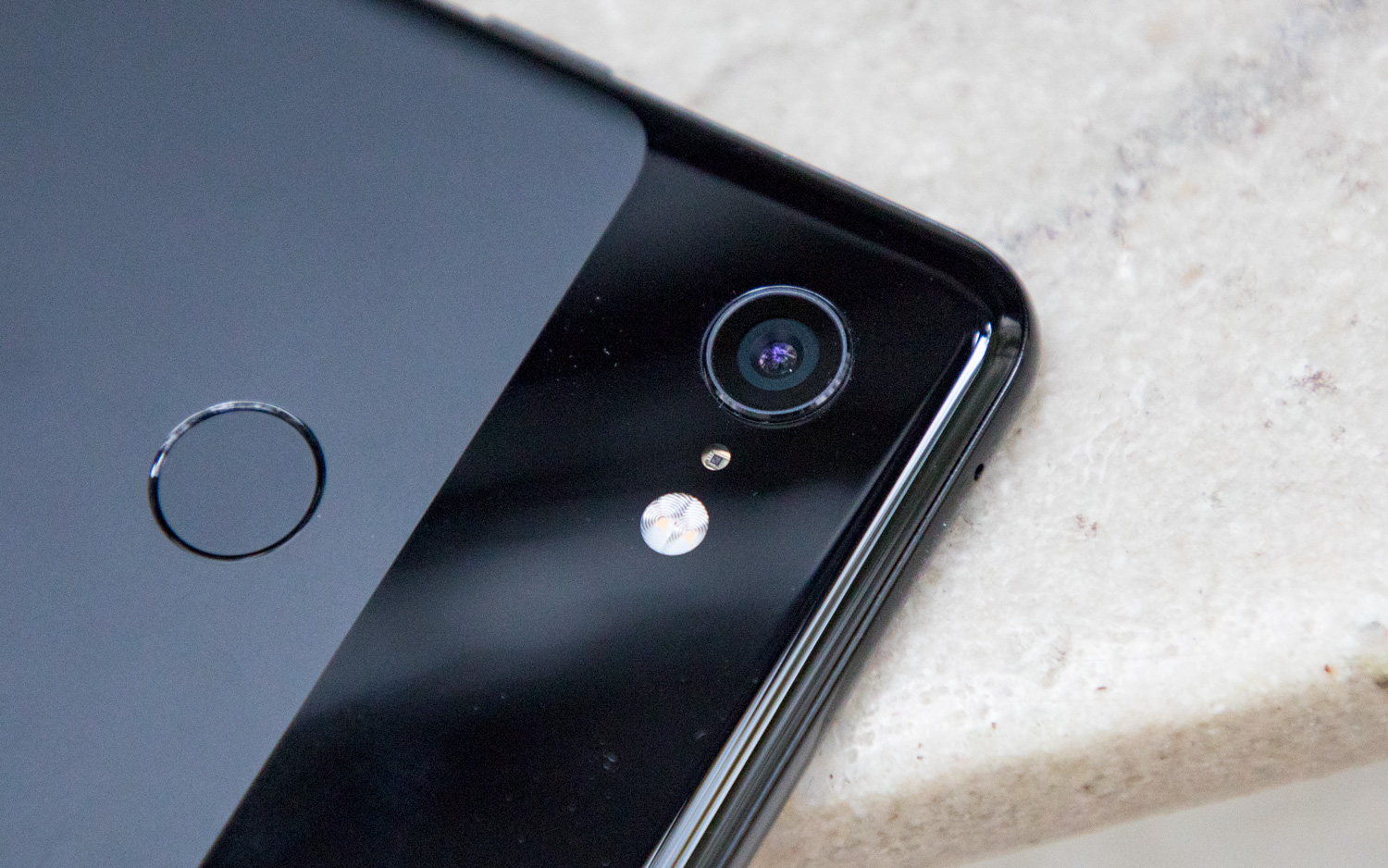
The Pixel 3 XL will see that AI-powered camera and raise it, with some smart camera capabilities of its own. Top Shot sorts through all the exposures captured by the Pixel 3 XL's single 12.2-MP lens and picks out the best one, so you're not stuck with a photo where someone blinked or moved suddenly. Super Res Zoom compensates for the Pixel's single rear lens and lack of optical zoom by using computation photography to fill in the details when you zoom in and reframe a shot. A Night Sight feature arrives soon to help the Pixel 3 XL perform better in low-light
But how do these cameras perform in the here-and-now? This close-up of some purple flowers shows the Note 9's expertise with optimizing your photos to make colors pop. The green leaves really come alive in the Note 9's shot, striking a nice contrast to the purple in the flowers. But I prefer the more natural colors in the Pixel 3 XL's image, which also does a better job of making sure the plants in the background aren't lost in shadow the way they are in the Note 9's photo.
My colleagues Phillip and Jorge took the time to pose in a corner of the office with some unforgiving lighting. The Pixel 3 XL handles the shadows a bit better. Phillip's has a less natural shine to it in the Note 9 image and Jorge recedes into the shadows. The Pixel photo also gets more little details right, like the brightly lit keys on Jorge's keyboard. The Note 9's camera washed out those colors.
The Note 9 does a better job, though, when the lights get really low. The Pixel 3 XL's photo of a variety of objects on a shelf in a dimly lit area is very dark, and it's difficult to make out words like "Unicorn Meat" and "Ryzen" in the background. That's not the case with the Note 9's shot, which is brighter with more realistic colors and sharper details. The upper right corner of the Note 9 pic is lost in shadow, but it's even darker when shot with the Pixel 3 XL.
The camera count reverse itself on the front of the Note 9 and Pixel 3 XL. Samsung's phone features a single 8-MP selfie cam, while the Pixel 3 XL offers a pair of front lenses, letting you switch to wide-angle shots when you want to squeeze more people and background details into your shot.
My colleague Sherri volunteered to take some self-portraits with the two phones, and the Pixel 3 XL takes the win here. Sherri's skin looks smoother in the Note 9's effort, and colors are certainly brighter from her sweater to her hair. The background detail on the Pixel 3 XL selfie is sharper, though, and individual braids stand out more.
Winner: Pixel 3 XL
Performance
The Note 9 and Pixel 3 XL feature the same chipset — Qualcomm's Snapdragon 845, which you'll find in just about any high-end Android phone these days. But Samsung's phone enjoys a slight edge, with 6GB of RAM in the base model to 4GB in the Pixel 3 XL. (And if you prefer, you can max out the RAM in the Note 9 to 8GB.)
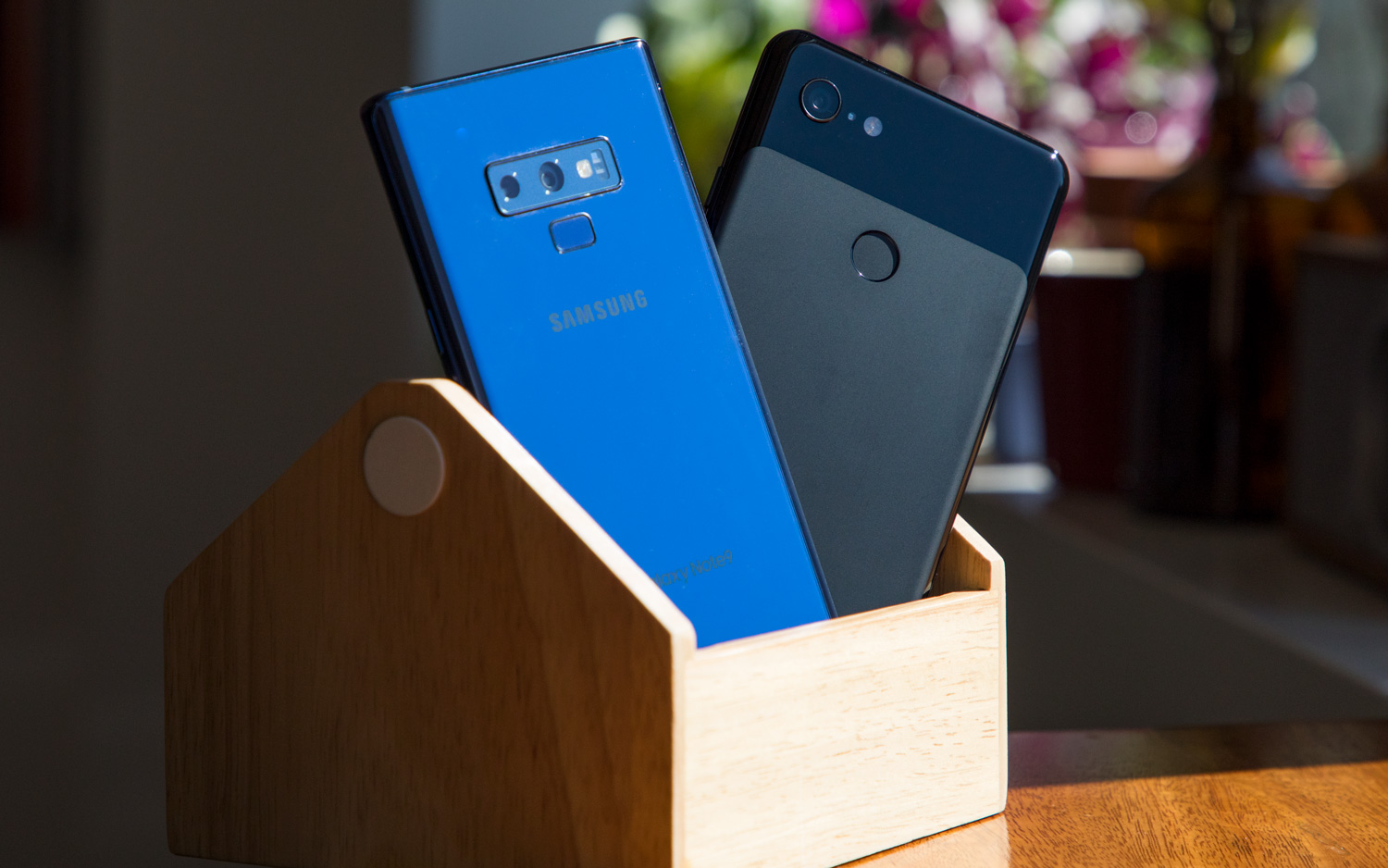
The extra memory helps the Note 9 in our performance testing. It scores an 8,876 in the Geekbench 4 test, which measures general performance. The Pixel 3 XL tallies 7,684 — a good number for Android flagships, but not quite up to what the Note 9 can do.
On the 3DMark Slingshot Extreme test for graphics, the Note 9 finishes on top, too. It scored a 4,639, topping the 4,396 result turned in by the Pixel 3 XL.
MORE: Best Phablet: Top Big Screen Phones (6 Inches or Larger)
The bottom line: You'll get flagship-level performance out of Google's new phone, but the Note 9 has the extra processing oomph that has made the Note lineup the go-to phone for power users.
Winner: Note 9
Software and Special Features
Pixel phones enjoy one clear advantage over the Android brethren: they get the latest version of Android as soon as Google can crank it out. The Pixel 3 XL is no exception, shipping with Android 9 Pie. The Note 9 is going to eventually get the newer version of Android — it's not clear when exactly — but for now, you're still stuck using Android 8.1.
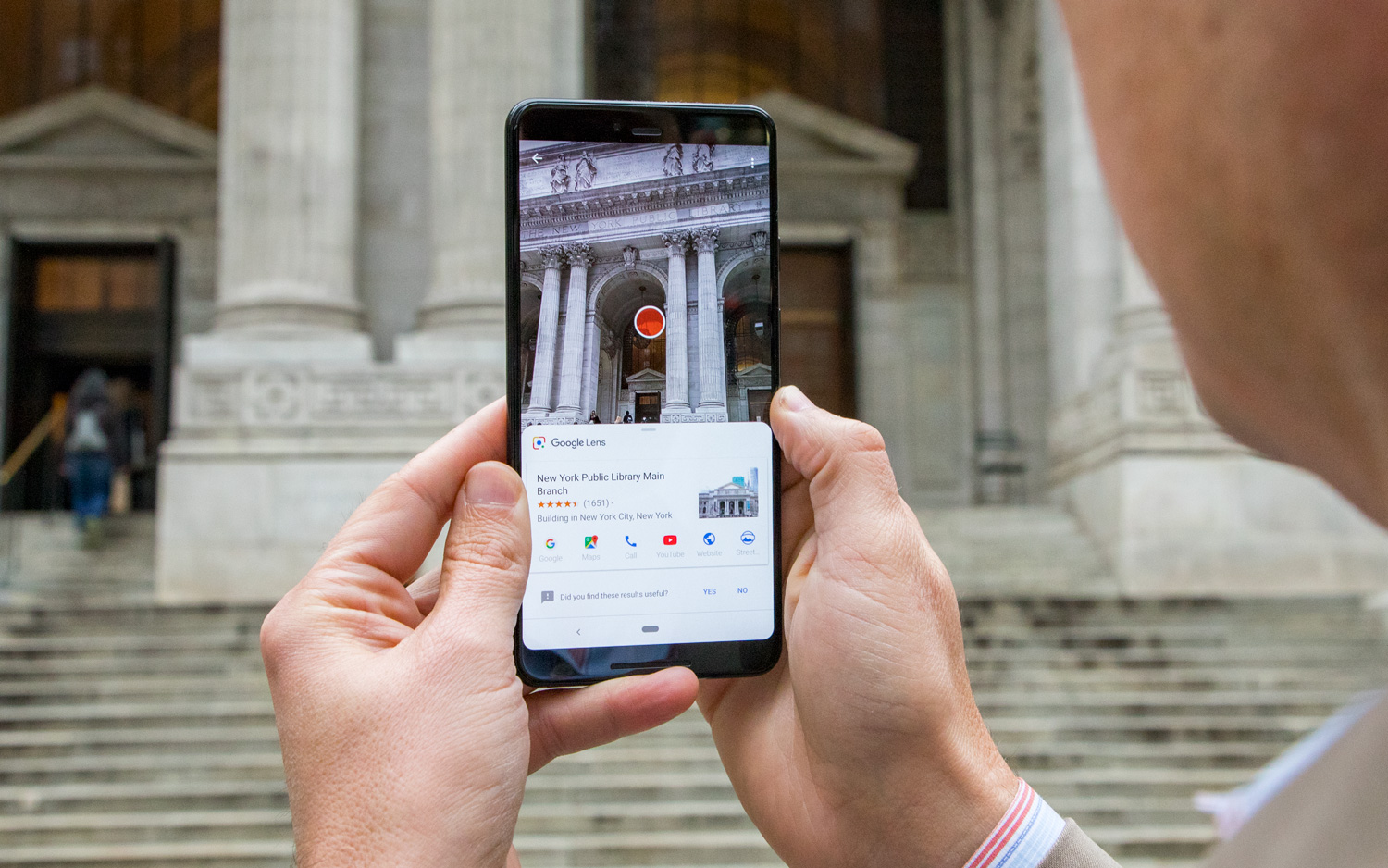
That means that Pixel 3 XL owners get all the benefits of an up-to-date Android, including new gesture navigation and time-saving App Actions. The Pixel 3 also supports Android 9's Digital Wellbeing feature for monitoring smartphone use, quieting notifications and setting app time limits.
The Pixel 3 XL enjoys a few other software advantages as well, thanks to Google's investments in artificial intelligence and machine learning. Call Screen, for example, lets you have the Google Assistant weed out telemarketers by answering your phone call.
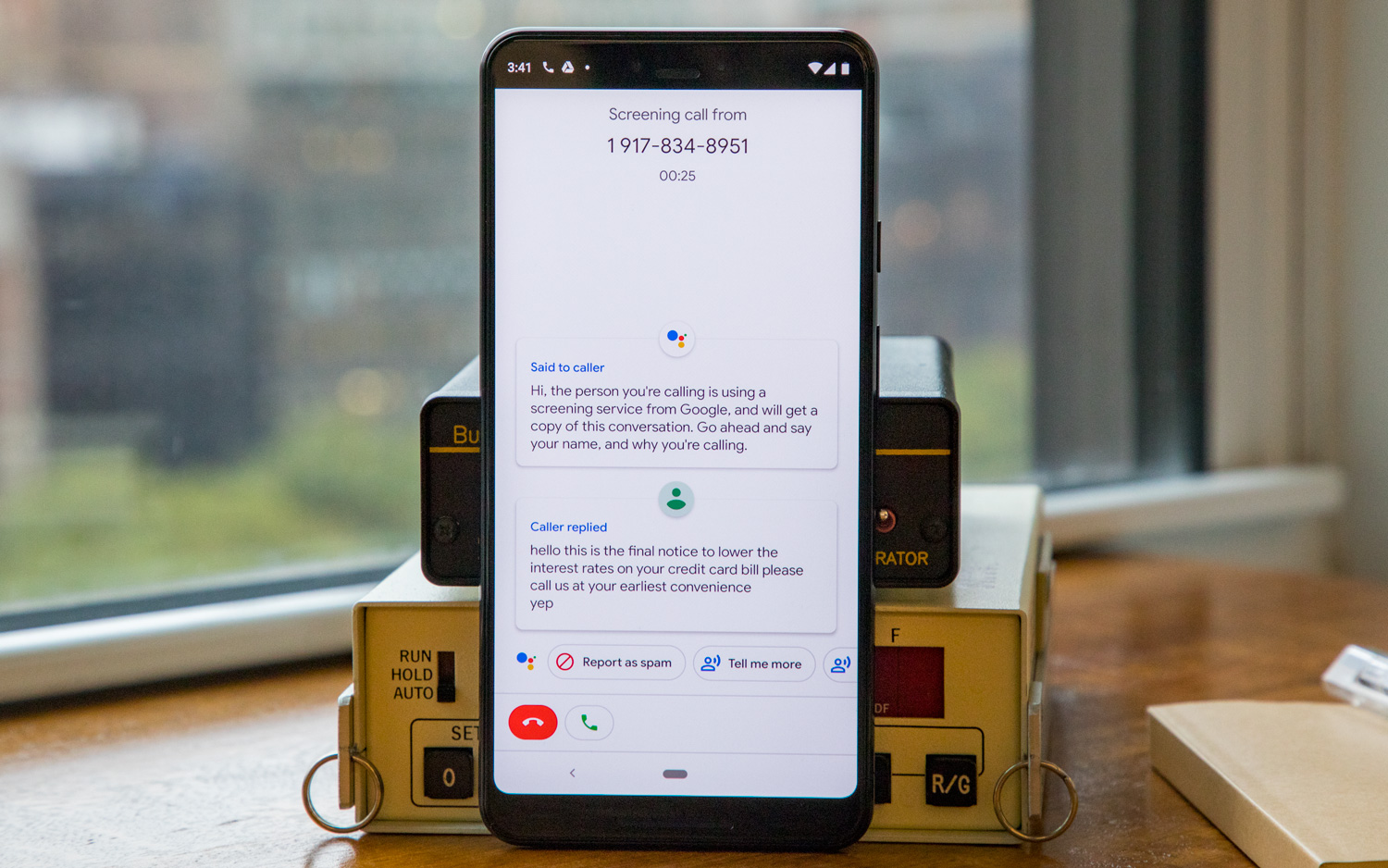
A real-time transcript of the call appears on the screen, allowing you to decide whether to jump in on the phone call or report it as spam. Next month, you may be able to have Google Assistant make reservations for you over the phone, as Google rolls out its Duplex support to select cities.
That's not to say the Note 9 is without any special software features, particularly if you view your smartphone as a productivity tool. The versatile S Pen returns with the Note 9 and this time it has Bluetooth connectivity, which turns it into a remote control for music playback, presentations, and even snapping photos. The Note 9's upgraded DeX features mean all you need is an HDMI cable and an external monitor and you can use your smartphone like it's a pocket-sized laptop.
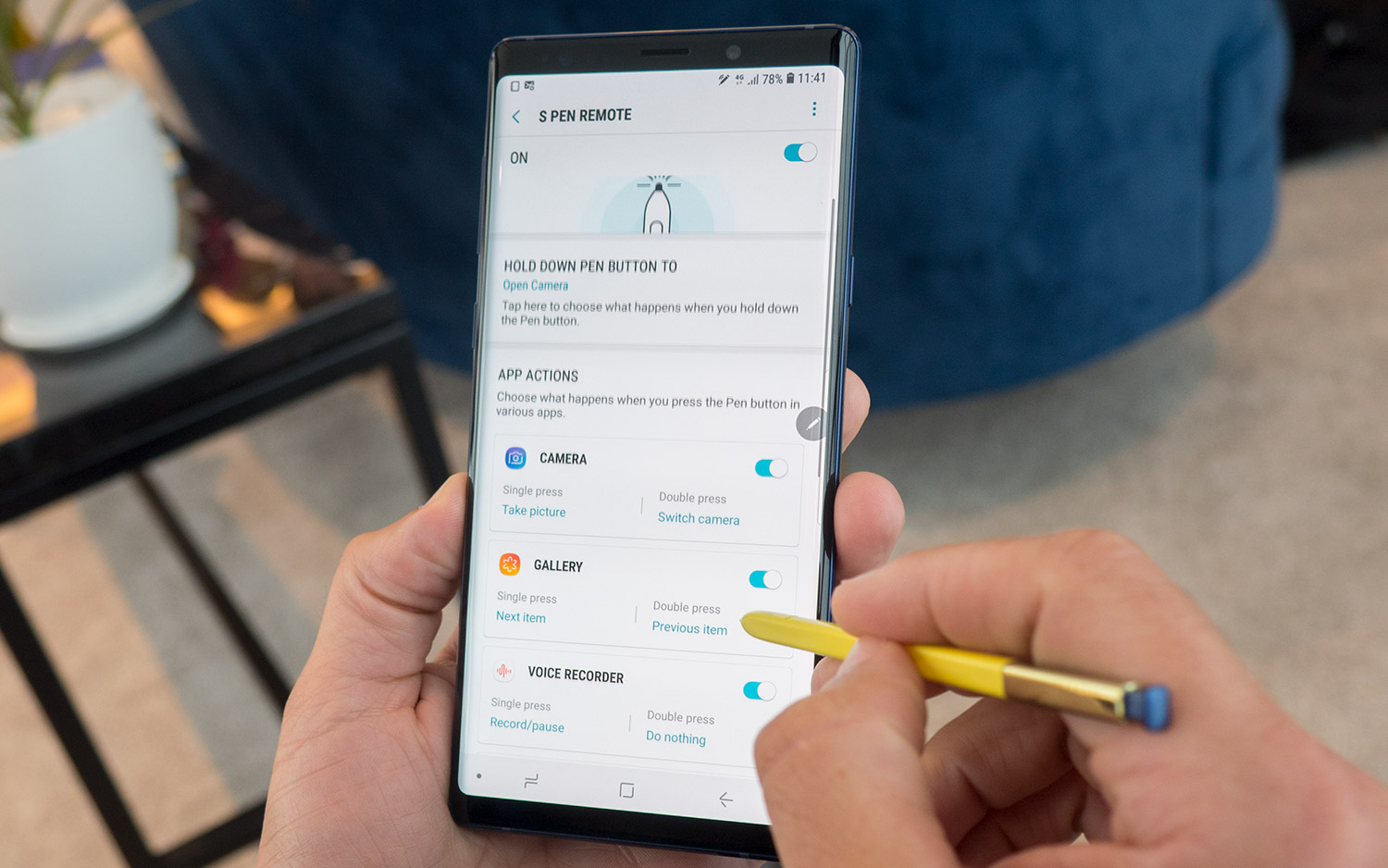
The Note 9 has its own digital assistant, too, and while Bixby is picking up new skills like booking reservations, it's still got a ways to go before it approaches the polish of Google Assistant.
Winner: Pixel 3 XL
Battery
The Note 9 packs a 4,000-mAh battery, bigger than even the 3,500-mAh power pack inside the ill-fated Note 7. The end result is happier here, as the Note 9 lasted a lengthy 11 hours, 26 minutes on our battery test (which involves continuous surfing over T-Mobile's LTE network until the phone runs out of gas).
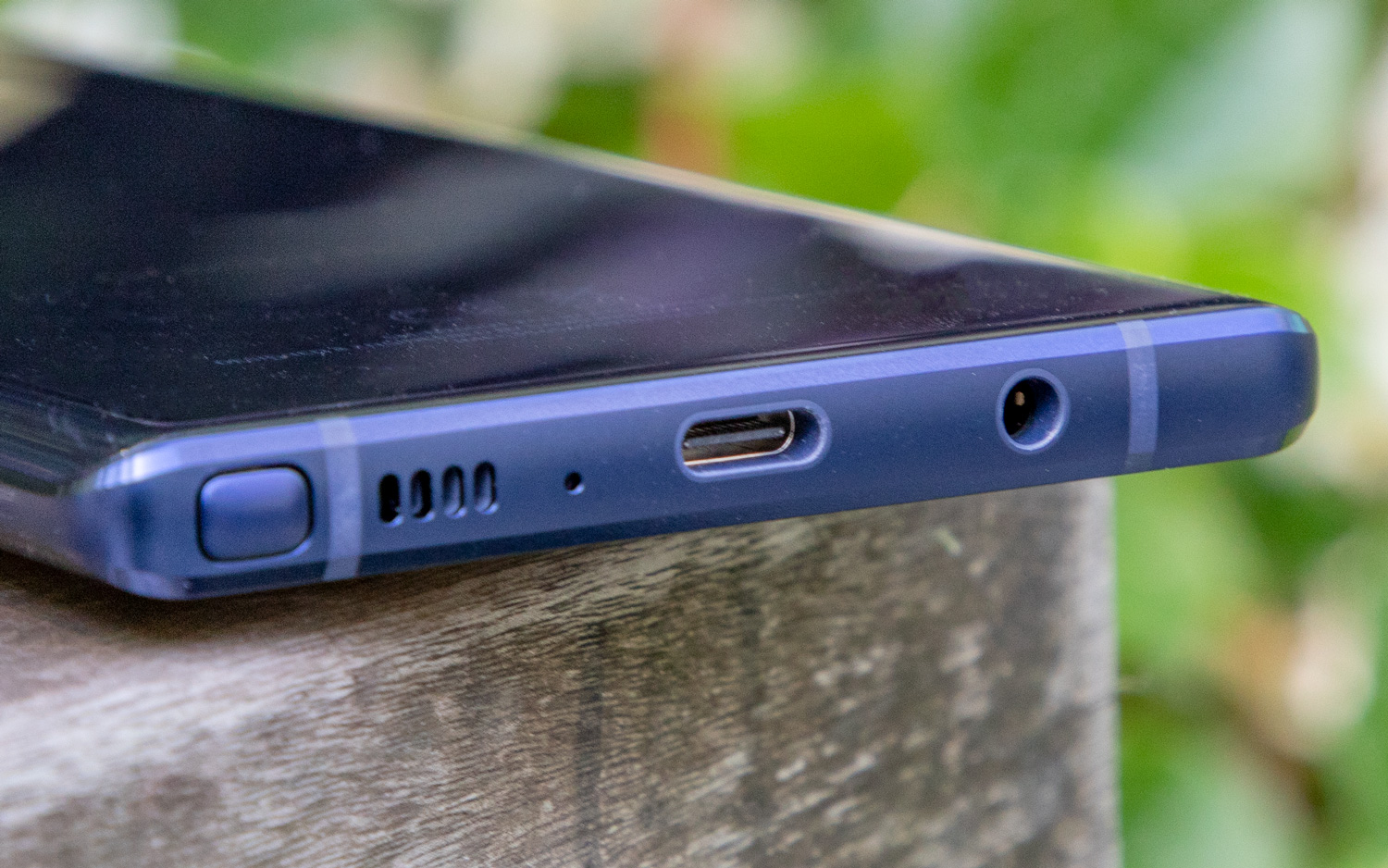
The battery on the Pixel 3 XL is much smaller at 3,430-mAh, and not coincidentally, so is its battery test result. Lasting 9 hours, 30 minutes on our test, the Pixel 3 XL feel just shy of the 9:48 average for smartphones.
MORE: Pixel 3 vs. iPhone XS Camera Face-Off: Why Google Wins
Both phones ship with an adapter that lets you quickly charge the device, and both support wireless charging. The separately sold Pixel Stand ($79) gives the Pixel 3 XL a slight boost by essentially turning your phone into a smart display while it charges, letting you talk to Google Assistant all the while. But this is a tale of endurance, and at the end of the day, the Note 9 lasts longer on a charge.
Winner: Note 9
Price And Availability
Smartphone prices have been climbing upward with the addition of each new feature, and the Note 9 has been at the front of that charge. Samsung's flagship costs $999 for its 128GB base model. Boosting the storage to 512GB adds another $250, pushing your Note 9 price tag beyond the $1,000 mark.
You won't pay as much for a Pixel 3 XL, but you'll give up a little capacity for that lower starting price. The 64GB version of Google's phone starts at $899. The $999 version of the Pixel 3 XL has the same 128GB of storage as the base Note 9 model. And Google's phones lack a microSD slot, so the capacity that comes with the Pixel 3 XL is what you're stuck with.
The Note 9 is more widely available than the Pixel 3 XL, as you can buy Samsung's phone from any of the major carriers. Only Verizon offers the Pixel, though Google sells an unlocked version of the Pixel 3 XL that you can take to the carrier of your choice. You can also use Google's phone with its Project Fi wireless service, which doesn't support the Note 9.
Winner: Draw
Bottom Line
| Phone | Note 9 | Pixel 3 XL |
| Design (10 points) | 8 | 7 |
| Display (20 points) | 18 | 17 |
| Cameras (20 points) | 16 | 18 |
| Performance (20 points) | 18 | 16 |
| Software/Special Features (10) | 8 | 9 |
| Battery (10) | 8 | 6 |
| Price/Availability (10) | 7 | 7 |
| Total (Out of 100) | 83 | 80 |
The Pixel 3 XL is a very good phone, particularly if you want a pure Android experience or the best camera phone available. But the Note 9 offers the better phablet experience, edging out Google’s phone in more categories.
The Note 9 nails the things that you’d want from a big-screen phone — a bright display, a lot of processing power and a long-lasting battery. Even in areas where the Pixel winds up on top, such as camera and software, the Note 9 isn’t that far behind. Samsung’s phones take great pictures in low light and features like the S Pen add value to the Note.
Which phone you ultimately get depends on whether you plan to use the device primary for photography or productivity. But the Note 9 offers the best blend of both.
Credit: Tom's Guide
Sign up to get the BEST of Tom's Guide direct to your inbox.
Get instant access to breaking news, the hottest reviews, great deals and helpful tips.
Philip Michaels is a Managing Editor at Tom's Guide. He's been covering personal technology since 1999 and was in the building when Steve Jobs showed off the iPhone for the first time. He's been evaluating smartphones since that first iPhone debuted in 2007, and he's been following phone carriers and smartphone plans since 2015. He has strong opinions about Apple, the Oakland Athletics, old movies and proper butchery techniques. Follow him at @PhilipMichaels.
-
weyersn How is this a Draw?Reply
The Note clearly wins in all important categories, excepting for the OS and price. But the pictures in this article clearly look like the Note is the better camera here. The Note 9 also has 2x optical zoom.
The Note can also take SD cards if the storage space, which beats the 3XL, becomes full. The Note even has 2GB more RAM.
Finally, the Note 9 even has a larger screen and with the larger battery (15% larger!), there is clearly no contest here. The Note 9 wins -
simon.paul.c 'But the pictures in this article clearly look like the Note is the better camera here. The Note 9 also has 2x optical zoom.'Reply
You like oversaturated? Smaller dynamic range? Me not! -
weyersn Reply21512450 said:'But the pictures in this article clearly look like the Note is the better camera here. The Note 9 also has 2x optical zoom.'
You like oversaturated? Smaller dynamic range? Me not!
Might be because it looked better on my work laptop screen then. Perhaps I need a better monitor to truly appreciate the difference.
What about the rest of the hardware though? And the 2x optical zoom? -
anthonydacosta the note 9 is also avaialable on google fi network(may have been added after this article came out). just lacks the extra security google offers on the pixel over fi.Reply
the pixel may have a smaller storage, but i think any google phone has unlimited cloud storage . doesn't matter the picture size
